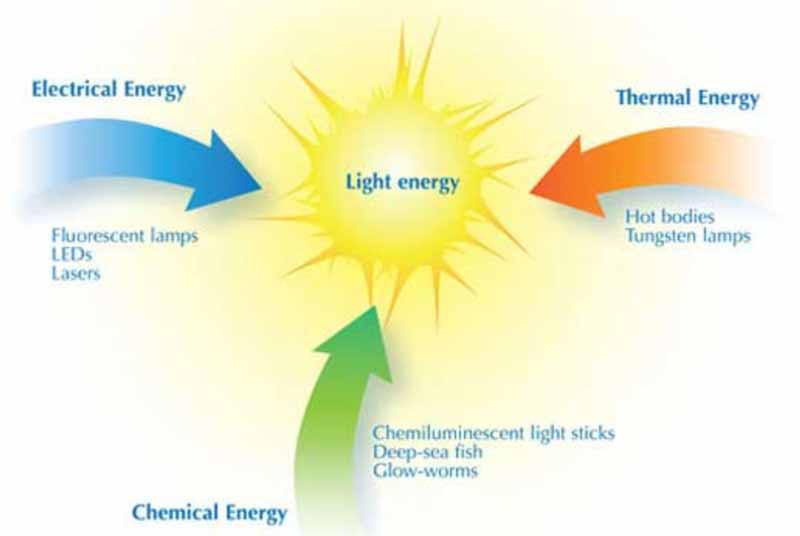Light energy is the only visible form of energy. Lots of things about light energy and its sources are discussed here. To get detailed information on light energy, dig this page. To know more about light energy and its sources, click here.
Light is a form of energy which our sense of sight can detect. It is made of electro-magnetic radiation and travels in a straight path. In everyday we use the word “light” for at least 10 times a day!! Have you ever think about the energy we get from the light. Light is all around us. It has the ability to tan or burn our skins, it can be harnessed to melt metals, or heat our food. Light energy posed a huge challenge for scientist up to the 1950′s.
For our purposes we will use light to mean all of the frequencies of radiation, known as the electromagnetic spectrum or EMS. Light is always in motion and cannot be stored, so it is a kinetic type of energy.
You might say that light is essentially “pure” energy, since it theoretically has no mass. Light is simultaneously a wave and a particle. The higher the frequency, the more energy the light or electromagnetic radiation contains. The greater the frequency, the more energy each particle, called the photon. Light energy comes from different sources. Different sources of light energy are discussed below.
In general, objects which emit their own light are called as luminous while the objects which do not emit light but can reflect light from other sources are called as non-luminous objects. There are many sources for the light energy of which some of them were obtained from nature while the others are produced artificially or may be obtained from other forms of energy. Some sources of light energy are given below.
It is the natural source and is considered as the oldest source of light energy. Sunlight is an essential source for many natural processes such as water cycle, photosynthesis, sterilization, sanitation etc. The energy on the sun is generated because of hydrogen fusion. The light from the sun reaches planets and other bodies which includes earth.
They are an important artificial source of light. When an electric current flows through metallic filament tungsten present inside the bulb, it glows due to resistance. The filament gets heated up and emits light.
On burning a fuel, it will produce a flame which emits light. This is used in earlier days during nights for vision before the invention of the electric bulb. Examples are lanterns.
During the explosion of a powerful bomb, heat is generated along with the emission of light. While testing atomic bombs, the whole area will be illuminated with intense light.

The sources discussed above involves another form of energy like fission reaction, electricity, heat etc. is converted into light energy.
Some of the important and interesting sources of light energy are listed below,
Luminous objects emit light at high temperatures. The process of emitting light at high temperatures is called incandescence. But it is not considered as an efficient source for light since most of the input energy becomes thermal energy.
The process by which materials emit light for a period of time by receiving energy from another source is called as phosphorescence. In this process, the materials will store energy and then emits light energy gradually. Examples are clock dials and watches coated with phosphorescent materials glow at dark in the absence of light.
Gas particles emit light when electricity is passed through them and the process is called an electric discharge. Examples are lightening which occurs in nature. Other examples are neon gas which emits orange/red colour, sodium vapour lamp emits yellow colour etc.
The process in which emission of light takes place by receiving energy from another source is called fluorescence. The substances which absorb light or other electromagnetic radiation and emit light at a longer wavelength with low energy are called as fluorescent substances. Examples are fluorescent tubes.
Chemiluminescence is the emission of light which takes place as a result of a chemical reaction. In this process, chemical energy is converted into light energy with little or no change in the temperature. Examples are safety lights and cool lights.
The process in which the production and emission of light take place by a living organism due to the chemical reaction taking place inside their body. Examples are fireflies, glow-worms, some fungi and in marine vertebrates and invertebrates.
Related information on Light Energy